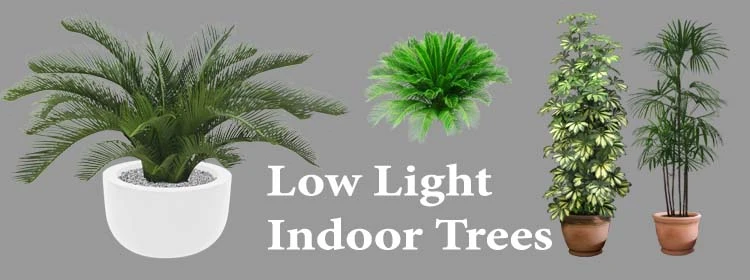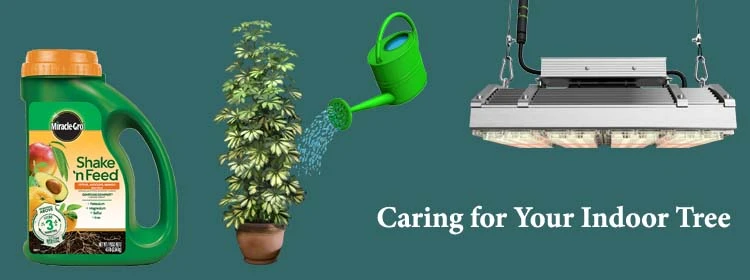reviewed by Christina Lopez
I always adore the look of a neutral environment. Low light indoor trees enhance prettiness to an increasingly concrete and steel-dominated environment. So, who doesn’t want to bring a little piece of that beauty into their own house? This tiny touch of nature can brighten up any place and creates an aesthetic atmosphere.
However, there is one major stumbling block to overcome and to have a decent tree-growing experience in low light. On the surface, this appears to be a significant issue. For example, trees depend on sunlight for photosynthesis, so restricting this process may appear to be a bad idea. One disadvantage of insipid interior decor, on the other hand, is “not going bold enough,” particularly before decorating it.
Contents
Right now, I’m dealing with the issue. Some of the rooms of my house are finished, and large furnishings have been completed. However, there are no accessories in the room. As a minimalist, I want to be more conscious of the décor. So, I bring into space – everything needs to be beautiful and meaningful and adaptable enough to move from room to room.
I recently discovered a quick solution to this problem: add plants or trees, to be precise. They effort like magic, quickly bringing a room to life and infusing it with personality. The idea of planting low light indoor trees help transition throughout the uncomfortable stage (post design, before styling). Once the trees are in place, you may gradually begin to enjoy your environment.
So, why are real plants being used? They can first get bigger! The larger the facility, the greater the influence on the pace. Second, false plants produce poison, but genuine plants abolish it. I realize that some folks are concerned that they will be unable to keep children alive. If you pick the proper low light indoor trees, they are not difficult to care for; water them once or twice a week.

The majority of these plants require a small quantity of light and moisture. However, some of the species need water regularly. They aren’t always selective when it comes to light: Window light gives just enough to keep them alive and is usually adequate to keep many species happy in growing. Some of them may survive in dim light but double-check before putting them in a dark corner.
These enormous low light indoor trees or bedroom plants will make your home more vibrant, welcoming, and inviting. Whether you’re may try for a prescribed look, a wilderness-like feeling, or a serene and peaceful presence. So, are you ready to take your indoor gardening to the next level? Read the article carefully, fixed your eternal soul to plant low light indoor trees. All the write-up carefully links to pick the perfect plant and where you can buy them all.
Houseplants are admirable as far as modern accessories go, not just for their capacity to brighten up a place but also for their capacity to boost our mental health. These low-light indoor trees have the power to brighten our spaces, freshen the air, and mirror how we are feeling on the inside. They do serve as a useful reminder of when and how we should look for ourselves.
When we feel outcast from the natural world, low light indoor trees might help fill the void created by the daily grind. We spoke with members of diverse plant communities about the health benefits they’ve seen as a result of plant parenting.
“There’s something zen about potting low light indoor trees in general. Forces you to be present at the moment and not being anxious about five million other things.” — Mary Marcella
Low light indoor trees or home plants don’t just beautify your space; tending to them can have an immensely calming effect as you get lost in the moments of providing them care. This is an example of mindfulness, which is a very effective technique for dealing with stress and anxiety.
A study published in the Journal of Physiological Anthropology found that nature enthusiasts who led a gardening job felt more peaceful, at ease, and relaxed than those who conducted tech-related work.
“When I get in a funk, I use the plants to help me out of it. I’ll check on them if there are any dead leaves, dryness, need of watering, and move around to get some sun, etc. This little bit of caring for something else (and who isn’t talking back to me) helps me clear my head and restart my day.” — Rachel Able.
Various plants have different requirements, and caring for them entails knowing about their quirks. This means you can find yourself putting around, focused on how to give them light. They will develop uniformly (like Pilea Peperomioides should), misting them (as certain palms should) and dusting their leaves.
“When my oldest went off to college, I bought myself a new plant. Within 6 months, I had 75. When they die I feel quite sad, tell them I’m sorry I couldn’t save them and thank them for the joy they brought my family.” — Teresa Bond
Plants do not always thrive for several reasons. Maybe it was a case of human negligence, or perhaps they didn’t have the necessary environment to grow in. Having houseplants can teach us to let go and accept that things don’t always work out the way we want them to. And that’s ok.

Before selecting a low-light indoor tree, you should always ask yourself a few questions, just like you would do for any other plant. Not spending proper consideration may represent the fine line drawn between successful growth and a total disaster.
The first step you will want to take is determining where you’re going to place your low-light indoor trees within your home. This is important because the trees you focus on and such a location may impact the trees you skip over. Some species of low-light indoor trees require a bit more sunlight than others.
It’s also not only an issue of sunlight when it comes to deciding the space. You’ll want to be certain that the tree you choose will fit comfortably and without difficulty in your chosen spot. While they won’t grow to an unbearable height, their branches will spread out, which might cause problems if you don’t prepare ahead.
It would help if you also decided on the category of tree you want for your residence. Natural trees come in various shapes and sizes, so it should be no surprise that this diversity extends to the interior environment. With such a wide range of options, you’ll be able to pick an indoor tree that perfectly matches your taste.

Even though a low light indoor tree doesn’t require much sunlight, that doesn’t mean that it won’t benefit from some light source. As such, you need to make sure that your tree is near sufficient light. Fortunately, there are many quality light options for you to choose from to help your tree out.
While an indoor tree will be quite durable in other ways except for low light survival, that doesn’t imply it will be ok with no attention. You will need to maintain the tree regularly, just like you would any other plant.
Water is a primary need that you will have to keep in mind. Granted, some of the trees can thrive indoors under low light, living on minimal amounts of water. However, this shouldn’t necessarily be looked at as a leeway that allows you to slack off a bit.
If you have a thin-leafed tree, your best bet is to make sure the potting soil is moist without crossing over into the wet threshold. Like any other plant, overwatering is more harmful to low-light indoor trees. If you do have a thick-leaved tree, you’ll want to wait until the soil dries out a touch.
Your tree will offer you some clear indications as to whether or not it needs water. It’s time to give them a drink if you see their leaves becoming transparent or if the margins of the leaves begin to curl or fade.
The soil also influences the health of your low-light indoor tree. When you pick up your tree, make sure it’s in good drainage soil and that the tree is potted above a layer of pebbles or stones, so it doesn’t sit in water. You’ll also want to make sure that you can drain any standing water in the pot’s base.
If you ever need to add soil to the base of your tree, make sure the soil is made especially for potted plants. This will guarantee that you’re using the sort of well-draining soil that won’t cause your tree to become soggy.
Fortunately, we have some of the same requirements for survival as plants. Here are at-a-glance self-care suggestions that apply to both plants and humans:
For a long time, I’ve been purchasing low-light indoor trees such as fiddle leaf figs, rubber plants, and palms. I recently went a bit wild and purchased a 10-foot tree!
I discovered a 10 ft ficus tree from the FB marketplace. Because a local auto parts store is shutting, they must sell this tree sitting on the shop floor for years. I scooped it up for $40 (a deal considering the size of the tree) and packed it into my SUV, safely transporting it home without losing a single leaf! In addition, was purchased a palm tree (also from the business) on the same trip.
It will be in my living room, next to a large south-facing window. Another factor is that my cathedral ceiling is fairly sloped, so it is several feet higher than a conventional 8-foot ceiling — the tallest room in the house.
I’m still undecided on where to put the palm tree. It’s rather large, honestly (not sure if it is easy to tell from the photo). I need to locate a pace open enough to accommodate it in my 970 sqft house because the stems aren’t going straight up but rather in a starburst pattern.
A few low light indoor trees can grow in low light, demonstrating that not every plant needs 10 hours of sunshine exposure to show off its lovely leaves. Plants can tolerate partial shadow and are suitable for homes or flats where the sun does not always shine through the window.
However, a growing plant must fulfill more than you must consider its light requirements; temperature, nutrients, and humidity levels.
 |
 |
 |
 |

About Christina Lopez
Christina Lopez grew up in the scenic city of Mountain View, California. For eighteen ascetic years, she refrained from eating meat until she discovered the exquisite delicacy of chicken thighs. Christina is a city finalist competitive pingpong player, an ocean diver, and an ex-pat in England and Japan. Currently, she is a computer science doctoral student. Christina writes late at night; most of her daytime is spent enchanting her magical herb garden.
 |
 |
 |
 |
Get new FREE Gifts. Or latest free growing e-books from our latest works.
Disable Ad block to reveal all the links. Once done, hit a button below
 |
 |
 |
 |